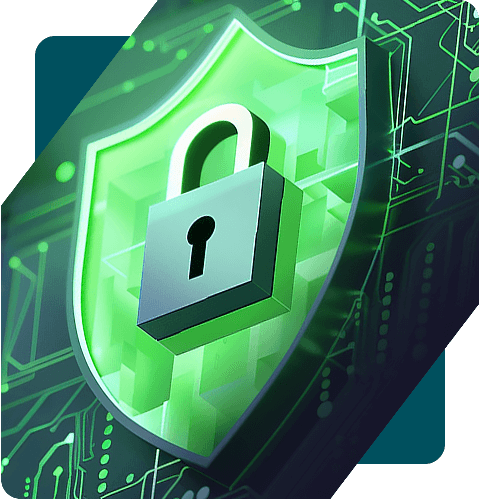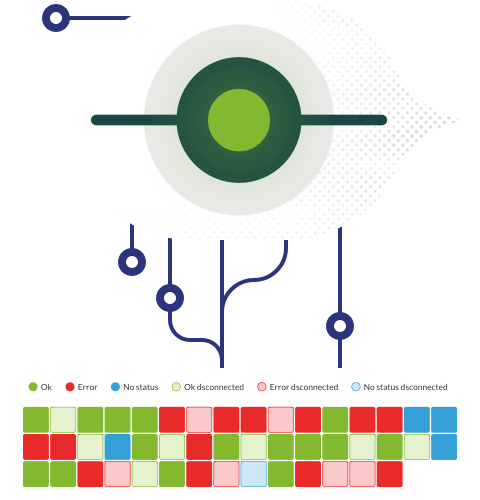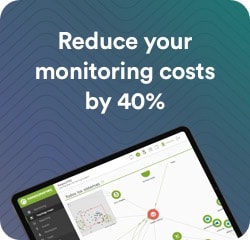To understand its importance, you must bear in mind that, in all industries and in organizations of all sizes, the combination of technology and digital skills is key to participating in the digital economy, where data, connectivity, automation and process improvements impact the employee experience and the customer experience through new business models, omnichannel (integrating more digital channels), integration, modernization and consolidation of technologies.
To achieve this, IT strategists must constantly monitor operation, security, compliance (industry provisions and regulations), the integration of new technologies and, of course, budget management.
Fundamental role of IT in business structures
In digital businesses, the critical asset is Information Technology (IT), so risk mitigation is essential not only to anticipate threats and protect the integrity of digital assets but also to ensure business continuity, through processes to:
- Identify risks: como primer paso en la gestión de riesgos, debiendo identificar (ambientales, regulatorios, de mercado, etc.) y priorizar en cuáles se encuentra expuesta la organización.
- Analyze: As a first step in risk management, having to identify (environmental, regulatory, market, etc.) and prioritize those in which the organization is vulnerable.
- Assess: Risks should be classified by their importance to define specific actions to mitigate them.
- Mitigate: From the evaluation, develop a plan to mitigate risks including risk prevention tactics and contingency plans.
- Monitor and review risks: There will be risks that you cannot get rid of (environmental or market risks, for example), but that can be monitored. Also in risk management, constant updating must be considered in accordance with the needs of the organization.
IT strategists can use emerging technologies such as advanced analytics and artificial intelligence to analyze risk data and automate IT staff tasks, with a proactive approach to new or negative conditions that could affect the business. Keep in mind that the repercussions of not mitigating risks can be quantifiable, such as reduced productivity, claims expenses, sales losses, etc., and unquantifiable, such as reputational damage to the organization.
Roles and Responsibilities of IT Managers
The IT Area has become extremely important in the Digital Transformation of organizations, being in charge of the following and responsibilities to provide constant and reliable access to IT services and systems:
- Develop business plans related to IT management: This includes defining the hardware and software needs of the company based on the business strategy and the particularities of all areas that make use of technology (Human Resources, Finance, Sales, Marketing, Operations, among others). Consider upgrading technologies, renewing licenses and usage contracts, as well as storage needs.
- Guarantee the security and availability of IT networks and services: From the maintenance and repair of IT infrastructure and resources, the installation and integration of equipment and technologies to advice on new technological solutions.
- Provide support and resolution on issues in services, hardware and software, offering assistance to personnel who need access to service resources, networks, software and hardware. It also involves deploying and training employees in the use of existing and new systems.
- Manage online processes, from website configuration, design and maintenance to e-commerce processes, from testing and improving features and interfaces, to setting up safe channels for transactions and operations from multiple channels.
- Ensure compliance with company quality standards, including service level agreements (SLAs). It is also to assist in IT assessments and inventories and research on new equipment and its acquisition.
- Evaluate potential threats to the company’s digital infrastructure, as well as seek alternatives for a quick response, including third-party support and contingency measures, seeking business continuity.
- Integrate new technologies into the business structure, especially due to the pace of digitization in which it is essential to constantly be evaluating and testing technologies that optimize services and operations in the organization, but that add more value to the business.
Skills Needed for IT Managers
The value of an IT Manager lies in leveraging existing data, ensuring business continuity, optimizing processes and connecting employees with each other and with suppliers, business partners and the end customer. To achieve these objectives, key competencies are required to manage IT, which must be constantly reinforced and updated.
An IT Manager must have Hard Skills, which are technical skills necessary for a job and which are acquired and improved through education, usually through training and certifications, along with experience, such as:
- Knowledge of Codes and Operating Systems, including knowledge of programming languages for coding websites, software development, database management and other technological systems, as well as the use, operation and possible problems in operating systems on equipment and devices.
- Management of databases, networks, hardware and software, knowing how to navigate database software and how to use forms and forms integrated into a database, integration with equipment and knowing how to effectively manage a company’s computer network.
- Software development, essential for those engaged in IT operations, as an organization may require IT professionals involved in programming to develop new software.
- IT security to keep information safe and confidential. It takes a working knowledge of this technical skill and constant updating as the sophistication of cyber threats evolves.
- Consolidation, IT modernization and integration of new technologies, especially emerging ones (Robotics, Artificial Intelligence, 3D Printing, among others) that contribute to efficiency in an organization.
Soft skills are also required, which are non-technical attributes, characters and interpersonal skills that define how a person deals with their professional colleagues and other people in the work and social environment. The soft competencies of the IT manager have become essential for their strategic role in the organization:
- Business understanding (integral vision), which implies understanding the needs of their peers in IT and business areas, especially since more and more technology expenditure is financed by departments other than IT, because technology has become accessible to end users and there is also consensus in more multidisciplinary teams on technology decisions, and even budgets previously only managed by the IT area are shared. Hence, the IT Manager must have a comprehensive view of the business and its value chain.
- Efficient and effective stakeholder management: IT managers should not only approach, understand needs and engage with users, but also with suppliers and strategic partners (stakeholders). IT Managers must also involve the parties involved in the innovation processes, to improve or create new services or products.IT managers must lead the change so that their teams stops thinking in terms of putting together applications that meet feature requirements and move on to designing user experiences that are intuitive and empowering. This change of philosophy in the IT function forces us to show more empathy towards users, who begin to value and require both the experience and the result. Likewise, the IT Manager must not lose sight of their team and provide them with the appropriate training. Attracting and retaining talent in the IT area becomes a fundamental task for the sustainability of the area and the fulfillment of business goals.
- Efficient and effective project management, including the management of internal and external projects and demands, the execution and management of mixed budgets, personnel and supplier administration, with transparency and efficient resource control. It also includes change management for users to adopt and make correct use of the technology, communicating about its impact on the business.
- Lead the innovation process in the organization, not only being up to date with technological changes and new trends, but knowing how to recommend, to generate new digital revenue streams, working closely with the areas involved in the creation and development of physical and digital combinations that ensure the best customer experience. In customer acquisition and retention, IT Managers assume a strategic role to know and segment customers and monitor marketing campaigns.
As it can be seen, today’s IT Managers must have communication, teamwork and project management skills, in close collaboration with the areas of the organization to understand the needs and look for courses of action that drive efficiency and constant innovation.
Difference between IT Managers and IT Leaders
As it can be seen from the above, the role of IT Managers has transformed from simple suppliers of IT equipment and resources to leadership roles in business, becoming the expert voice to recommend and influence key business decisions. To describe what an IT leader is, let’s look at 7 characteristics that make them indispensable:
- Curiosity as a cornerstone: Always seeking knowledge of the market, being an insightful advisor, assuming a role of business partner, with a clear perspective of the organization, the desired results and its value chain.
- Up-to-date and future vision: Constantly evaluating and testing the technologies that can be currently integrated and preparing to integrate new ones, especially those that could be implemented in the short or medium term. The leading IT Manager sets everything up to optimize costs, get rid of repetitive or low-value tasks, relies on automation, and drives their team to work efficiently and at the forefront.
- Humility: As a characteristic that differentiates the indispensable leader from the average leader. This leader recognizes and seeks support to inspire their teams to find solutions to issues, and trusts and values their team’s contributions. An IT leader can inspire confidence for input, becoming a mentor to their team. This also involves recognizing mistakes to learn from them.
- Union: The IT leaders of today are players of a team, able to build cohesion so that everyone works towards a goal and towards success. The IT Leader should be able to talk to other teams as well to foster collaboration, inside and outside the company (including suppliers and strategic partners).
- Discretion: This is one of the most particular and difficult characteristics to develop for IT leaders: allowing their team to do the work without intense supervision, without constantly telling them what and when to do certain tasks. To do this, it is clear that they must trust the capabilities of an adequate team with the necessary knowledge to do their job. This leader is also able to mentor when needed, celebrate successes, and encourage learning about failures.
- Optimism: IT leaders must be able to encourage optimism, seek improvements even in times of uncertainty and constant disruptions such as those we experienced in recent years around the world. The optimistic IT leader gets employees to understand their contribution and accept causes for which to seek improvements and work shoulder to shoulder with the same goal.
- Empathy: The lead IT Manager can understand interests from all areas to find courses of action towards the same mission. IT teams and employees of the organization feel identified and have a clear understanding of how they can participate in the common good and the expected business results. IT Leaders take their time to understand potential conflicts or miscommunication.
Finally, IT leaders are also able to recognize the gaps in competencies and can persuade their teams about the need to continue training through Continuous Education, something that has become the standard in IT ecosystems due to the dizzying speed at which technology changes
Key Features of Effective IT Management
According to ComputerWeekly, effective IT management “enables organizations to optimize resources and staffing, improve business and communication processes, and apply best practices. Individuals working in IT management should also demonstrate skills in general management areas such as leadership, strategic planning, and resource allocation.”
Based on this description, IT Managers must ensure that technological resources are used, maximizing as much as possible investments in IT and limiting the risks in its implementation. To do this, they must combine:
- Structures: How the IT function is organized, its assigned responsibilities, and the role in decision making.
- ·Processes: Including information systems and the measurement of their performance.
- Relationship mechanisms: With stakeholder participation, collaboration between business areas and IT staff.
To carry out this, it is necessary to rely on innovative technology and tools that streamline the functions of the staff and the IT leader, such as:
- Data analytics to get valuable insights that help improve operations, as well as identify the root of problems and even anticipate incidents.
- Cloud computing for convenient access to data and services from any location, taking advantage of the benefits of cost efficiency, scalability, security and continuity with data recovery strategies. For teams, the cloud allows them to modernize systems and streamline their work so they can focus on other priorities.
- Artificial Intelligence (including Cognitive Computing, which simulates human thinking) to analyze data, learn and predict problems, in order to improve the quality of IT services. Cognitive computing can be essential to managing IT and accelerating innovation. For technical issues and user support, you may leverage the use of AI-based chatbots acting as virtual agents.
- Internet of Things, (IoT), by incorporating the Internet into everyday objects to drive efficiency, whether by collecting or analyzing data from devices and sensors. Cognitive Computing in IoT allows you to identify patterns and provide additional context, which improves decision making in an accurate and timely manner.
Now more than ever, IT Managers will always be a key in adopting new technologies to improve operations and meet business challenges.
IT Teams: Types and Functions
IT Teams, as we have seen, work with a wide range of IT services and equipment and each one is different, according to the needs of the company. Some are permanent and others have a specific duration according to the particular goal for which they were created. The types of IT Equipment and their functions are:
- Operations Teams: in charge of critical infrastructure for business operations, including networks, data centers and web services. Their job is to monitor and ensure the availability of services and systems to support business operations. They are also known as IT Service Management (ITSM) teams. These teams are permanent.
- Project Teams: focused on specific solutions for particular problems, the implementation of a system or a substantial change in IT. Their efforts are temporary, as once a project is completed the team can be disbanded or reassigned to other functions.
- Support Teams: with responsibility for the maintenance and sustainability of the systems. They are usually permanent teams, (just like operations teams). They are in charge of IT service management to keep operations running. Also, like project teams, they are assigned to address specific problems and even several mini-projects.
- Process Teams: in charge of improving processes related to business growth, also known as enterprise IT support teams. Their job is to manage and improve IT systems for a business process. These teams include analysts, project managers, and data analysts. They work closely with project teams to achieve specific results.
Conclusion
In the digital world, IT Management has become vital to achieve business results and to give continuity to operations regardless of contingencies or disruptions that may arise now and in the future. Also, IT Management must ensure that the employees of the organization adopt the technology and are involved in the strategic decisions of the technology. At the same time, the IT team must ensure that the company’s staff is productive and focused on the business. That is why IT Managers must become leaders in technology decisions, with well-structured teams capable of doing their job and contributing to innovation to face challenges and forge the competitive differentiation of the organization.
Beyond limits, beyond expectations









